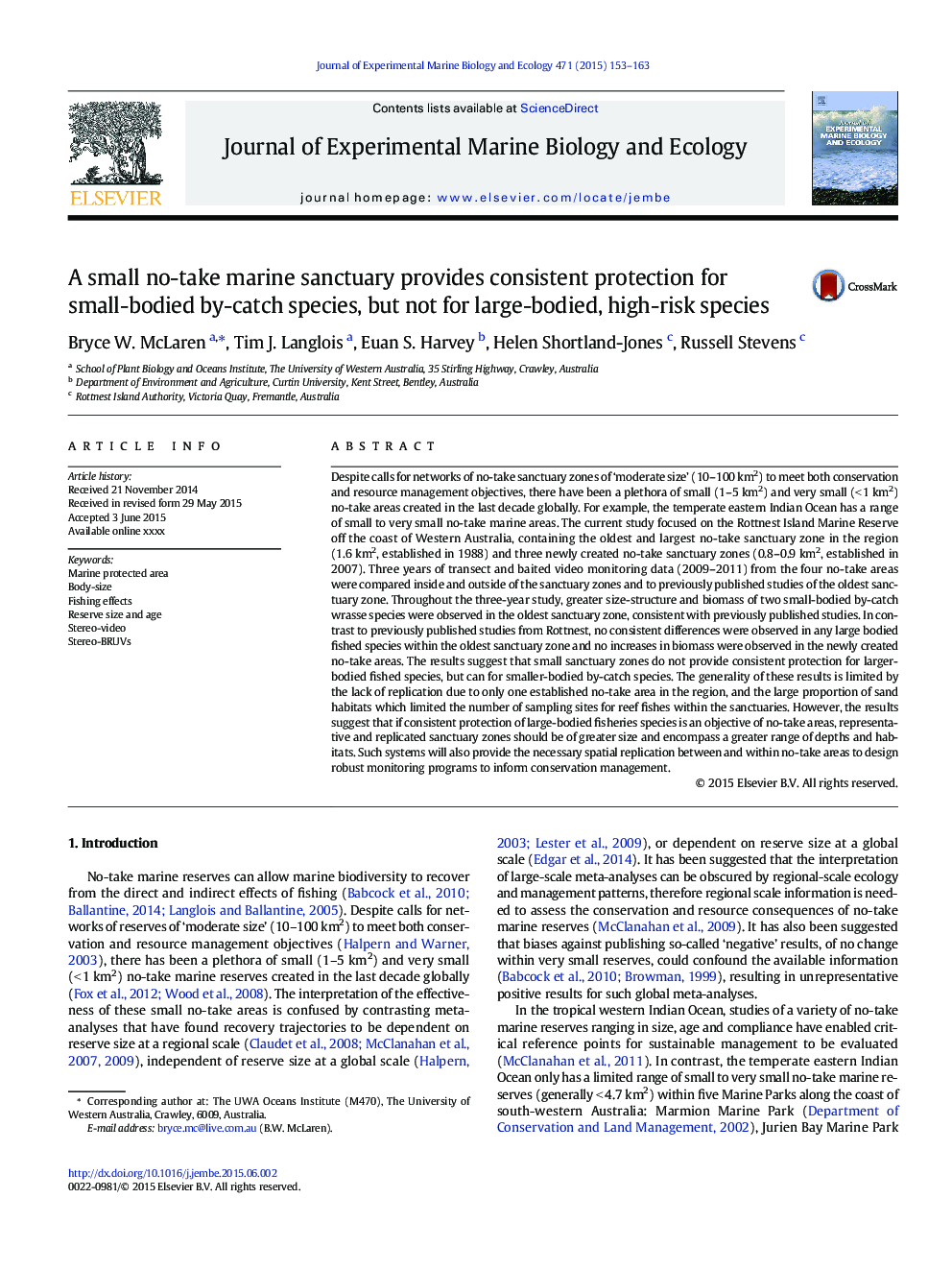| کد مقاله | کد نشریه | سال انتشار | مقاله انگلیسی | نسخه تمام متن |
|---|---|---|---|---|
| 6303870 | 1618404 | 2015 | 11 صفحه PDF | دانلود رایگان |
عنوان انگلیسی مقاله ISI
A small no-take marine sanctuary provides consistent protection for small-bodied by-catch species, but not for large-bodied, high-risk species
ترجمه فارسی عنوان
یک حوضه کوچک دریایی حفاظت مستمر برای گونه های کوچکی را به وجود می آورد اما نه برای گونه های بزرگ و با خطر بالا
دانلود مقاله + سفارش ترجمه
دانلود مقاله ISI انگلیسی
رایگان برای ایرانیان
کلمات کلیدی
موضوعات مرتبط
علوم زیستی و بیوفناوری
علوم کشاورزی و بیولوژیک
علوم آبزیان
چکیده انگلیسی
Despite calls for networks of no-take sanctuary zones of 'moderate size' (10-100Â km2) to meet both conservation and resource management objectives, there have been a plethora of small (1-5Â km2) and very small (<Â 1Â km2) no-take areas created in the last decade globally. For example, the temperate eastern Indian Ocean has a range of small to very small no-take marine areas. The current study focused on the Rottnest Island Marine Reserve off the coast of Western Australia, containing the oldest and largest no-take sanctuary zone in the region (1.6Â km2, established in 1988) and three newly created no-take sanctuary zones (0.8-0.9Â km2, established in 2007). Three years of transect and baited video monitoring data (2009-2011) from the four no-take areas were compared inside and outside of the sanctuary zones and to previously published studies of the oldest sanctuary zone. Throughout the three-year study, greater size-structure and biomass of two small-bodied by-catch wrasse species were observed in the oldest sanctuary zone, consistent with previously published studies. In contrast to previously published studies from Rottnest, no consistent differences were observed in any large bodied fished species within the oldest sanctuary zone and no increases in biomass were observed in the newly created no-take areas. The results suggest that small sanctuary zones do not provide consistent protection for larger-bodied fished species, but can for smaller-bodied by-catch species. The generality of these results is limited by the lack of replication due to only one established no-take area in the region, and the large proportion of sand habitats which limited the number of sampling sites for reef fishes within the sanctuaries. However, the results suggest that if consistent protection of large-bodied fisheries species is an objective of no-take areas, representative and replicated sanctuary zones should be of greater size and encompass a greater range of depths and habitats. Such systems will also provide the necessary spatial replication between and within no-take areas to design robust monitoring programs to inform conservation management.
ناشر
Database: Elsevier - ScienceDirect (ساینس دایرکت)
Journal: Journal of Experimental Marine Biology and Ecology - Volume 471, October 2015, Pages 153-163
Journal: Journal of Experimental Marine Biology and Ecology - Volume 471, October 2015, Pages 153-163
نویسندگان
Bryce W. McLaren, Tim J. Langlois, Euan S. Harvey, Helen Shortland-Jones, Russell Stevens,
